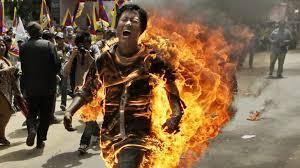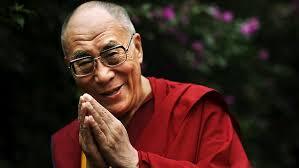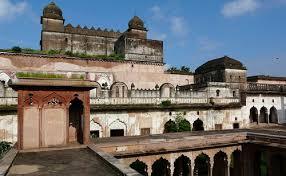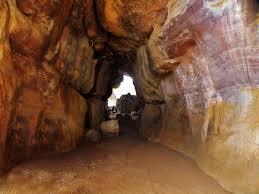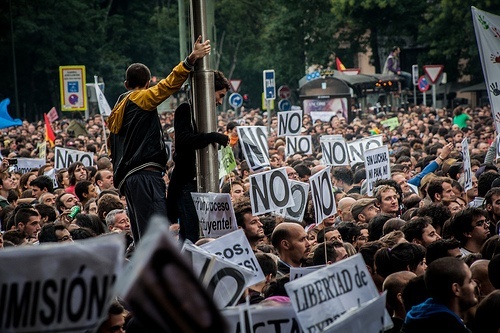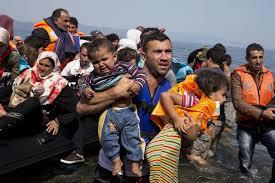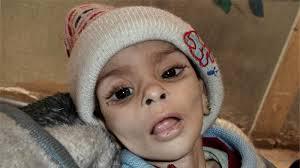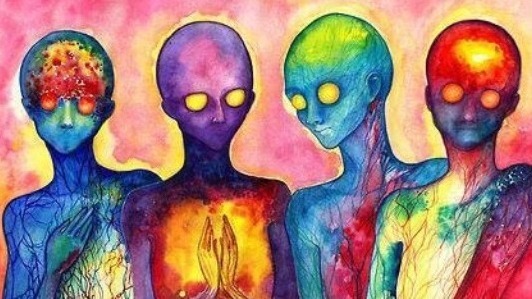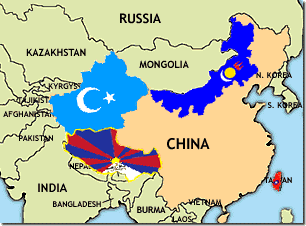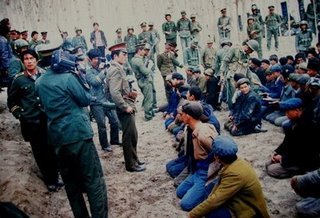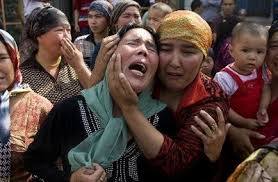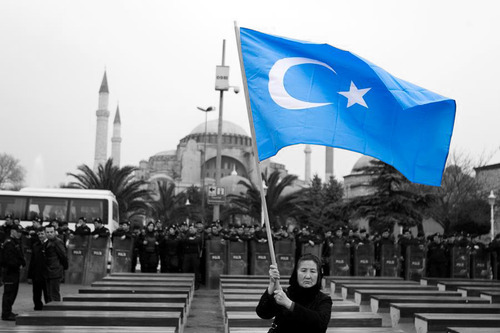Carlos Mundy's Blog, page 2
March 12, 2016
We must help save Tibet from total assimilation by China.
I am writing this post from Dharamsala (India), the seat of the Tibetan Government in exile. Two days ago I participated in the 57th anniversary of the Tibetan uprising against the Chinese occupying forces. The passion with which Tibetans of all ages , many of which have been born in exile, marched peacefully chanting vigorous slogans demanding the United Nations to take action and save their beleaguered nation, impressed me greatly.
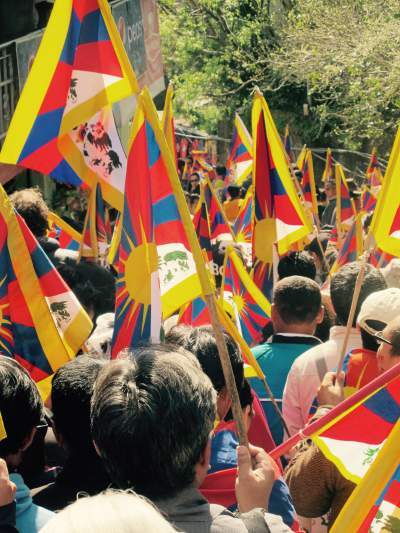 Tibetans peacefully and freely commemorating the 57th Anniversary of the Uprising against the Chinese in Dharamsala (India).
Tibetans peacefully and freely commemorating the 57th Anniversary of the Uprising against the Chinese in Dharamsala (India).
On the 20th, close to 160.000 Tibetans living in exile in over 32 countries will vote on a second round to choose their democratically elected Prime Minister and whomever is elected has a crucial role to play in the saving their country from total assimilation by China.
 With Dr Lobsang Sangay, current Sikyong of Tibet in exile (Prime Minister)
With Dr Lobsang Sangay, current Sikyong of Tibet in exile (Prime Minister)
 Mr Penpa Tsering, Speaker of the Tibetan parliament and opposition candidate for the post of Sikyong
Mr Penpa Tsering, Speaker of the Tibetan parliament and opposition candidate for the post of Sikyong
In contrast, the reality for close to six million Tibetans living in Tibet alongside over eight million ethnic Chinese is dramatically different. The Tibetans in Tibet have no freedom of movement to travel even within the country, they have no freedom to practice their religion without the scrutiny of Communist officials, possessing a Tibetan flag or a photograph of the Dalai Lama or the Karmapa Lama is considered a most heinous crime and lands the perpetrator in jail where he or she will be submitted to torture and a lengthy sentence. The brutality of the Chinese invaders has no limits as can be seen by the following video:
The Chinese are not allowing tourism into Tibet as they do not want any witnesses to their savage repression. Just to mention some examples, Tibetans are segregated in schools from the Chinese and children now barely know how to write their own language. A Chinese worker gets paid double the salary than a Tibetan one for the same job though only good jobs are available to ethnic Chinese or Tibetan collaborators. The Tibetans are also discriminated in their access to the health system and according to the Tibetan Government in Exile, women are forcibly sterilized and even forced to have abortions and mixed marriages are encouraged. According to international think tanks, Tibet is the most repressed country in the world behind Syria. It is actually a police state.
The following images speak for themselves:
It is clear that the long term strategy of the Chinese occupying government is the total assimilation of the Tibetans and the disappearance of their unique culture and way of life. This is clearly Cultural Genocide.
The tragic self-immolations of 144 desperate Tibetans since 2009 has not served any purpose in advancing the terrible plight of Tibetans but has been used as anti Tibetan propaganda by the cruel Chinese regime and regrettably the Western press relegates these incidents to a foot note in their newspapers and magazines, if at all, but the reality is that Tibetans are so desperate about their plight and lack of basic freedoms that they take these sort of desperate actions.
So the question is what is the best way forward. His Holiness The Dalai Lama, though now retired from active politics has marked the path through the Middle Way approach by which Tibet would have genuine autonomy within the Chinese constitution but the reality is that the Chinese government is just playing a waiting game. They believe that as the Dalai Lama is 80 years old they only need to be patient and the circumstances will play in their favour to achieve their long term goal of total assimilation.
Both candidates to Prime Minister, advocate His Holiness’ Middle Way approach and do not seek total independence, though many voices specially from the impatient young Tibetans want a more violent approach and desire total independence. They lack, in my view, any pragmatism though their frustration is totally understandable. That is why, it is my believe that the newly elected Prime Minister must take a more aggressive approach towards finding a solution. I see as a first step that as soon as he takes office, he requests from a friendly government such as India or the United States that they host direct talks with no preconditions between His Holiness The XIV Dalai Lama and the President of China, with the Prime Minister of India or the U.S President as moderators in the talks depending which country is hosting them.
The Dalai Lama is recognized world wide as a statement of impeccable integrity: a man of peace, and though retired from politic because of his stature, what he can achieve no politician whoever seasoned can. Once they sit face to face, there is a very good chance that the Chinese will see that His Holiness is a sensible man whom they deal with and definitely is not the problem they consider he is but in fact is the only the solution to their quagmire. All talks held until now between envoys of both sides have been just another strategy by the Chinese in their game and have been exclusively used by them as a propaganda tool.
A master stroke by His Holiness was the crowning of Laghyari Trichen Wangchuk as the XVIIIth Lhagyari King of Tibet in Dharamsala, thirteen years ago at the age of twelve. His father, King Lhagyari Trichen Namgyal Gyatso, spent two decades in prison after the Chinese invasion and died in Dharamsala after he was released having served in the Tibetan government in exile. The XVIIIth descendant of a lineage of Kings is another proof of Tibetan sovereignty whatever argument the Chinese might use and this is not counting previous dynasties of Tibetan Kings. The young King is currently living in the US and is mentored by the Dalai Lama. He travels the United States and gives talks at different universities about the plight of his people though bears not even an iota of hatred towards the Chinese. I have no doubt that this bright young man will be called when the time is right to play a pivotal role in the future of his country and that is obviously for me, the reason behind His Holiness official recognition.
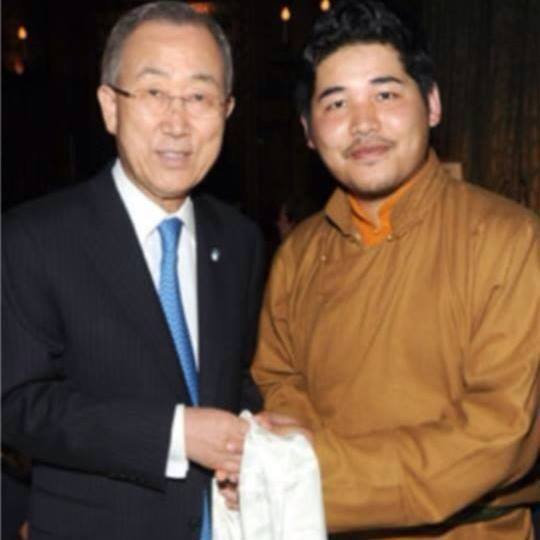 King Lhagyari Trichen with General Banki Moon, Secretary General of the United Nations in New York
King Lhagyari Trichen with General Banki Moon, Secretary General of the United Nations in New York
Tibet is now at a crossroad and its very survival is at stake. There is no time to loose. I trust that the Tibetans in exile will choose whom they consider the best candidate as Prime Minister to act on their behalf and save their countrymen inside Tibet from total assimilation. If a solution is not found, when His Holiness is no longer with us, Tibet will explode and undoubtedly their will be a blood bath. Sadly the severe repression that will follow will mean the annihilation of the Tibetan’s dream for freedom.
China plays with all the cards in their hand and is not prepared to loose, but there is a factor that in their pride and vanity the Chinese communist regime, that sees itself as eternal, has not taken into account and that is that no regime on earth has lasted: not those of antiquity and not those of the modern era, the latest example the collapse of the Soviet union. History is there to proof it and China will be no different. China has changed so much during the last decades and the economical reforms of the regime have created a thriving middle class that will be its Achilles heel. Sooner than later this middle class will demand political reform and when that happens the Chinese regime will have reached its twilight.
In my latest book, The Twilight of the Fourth World, co-written with my sister Charis we foresee just that scenario and Tibet will be once again be free. There is a very valid reason why they say that “Thoughts become Things.”
March 11, 2016
I invite you to visit Bhopal
I visited Bhopal for the first time over years ago, when I was doing research on my soon to be released novel, The Indian Kings of France: the fascinating story of the Bourbons of Bhopal, and I have returned on several occasions.
During my research, I was fortunate to meet members of the Royal Family who are the owners of the charming Jehan Numa Palace hotel which is a must destination when visiting the city.
 The charming Jehun Numa Palace Hotel
The charming Jehun Numa Palace Hotel
The capital of Madya Pradesh unfortunately is still known world-wide for the tragic catastrophe of Union Carbide which marked its citizens for ever; but since then it has recovered from the terrible trauma and there are many reasons to visit the city. The older part of the city still bears the stamp of the Nawabs of Bhopal, who ruled the city until independence. During the 19th century, Bhopal was governed by a succession of four extraordinary Queens known as the Begums of Bhopal. These women, in a man’s world, gave the city its roads, civic institutions and important mosques and palaces. Regrettably, the local government has not taken care of this heritage and most of the palaces are in an appalling state unlike other former Kingdoms in India.
 Shaukat Mahal the beautiful palace built by the Bourbons and given as a gift to the Begums is now sadly in a terrible state of decay though it is an architectural marvel of Indo-European architecture.
Shaukat Mahal the beautiful palace built by the Bourbons and given as a gift to the Begums is now sadly in a terrible state of decay though it is an architectural marvel of Indo-European architecture.
Please do not let this discourage you, as Bhopal is worthwhile visiting. The influence of the Bourbons , two of which were Prime Ministers of the state during the rule of the Begums, is ever present in all the historical buildings through the Fleur de Lys which was even included in the Royal Court of Arms of the Royal family. In any case, during my research, as I mentioned earlier I visited Shaukat Mahal, Sadar Manzil and Gohar Mahal which had all been all Royal
residences and of course the Bhopal Church constructed by Prince Salvador of Bourbon. Another very interesting place to visit is the Center for Performing and Visual Arts known as Bharat Bhawan and designed by the famous architect Charles Correa in harmony with the surrounding landscape.
I would also recommend the National Museum of Mankind, this institution is spread over 200 acres on the Shamla Hills near the Upper Lake. It is among the largest open-air anthropological museums in India, and showcases tribal art and culture. The museum is located on a prehistoric site and is dotted with painted rock shelters. The outdoor space has been divided into various thematic exhibitions, which contain life-sized dwellings from coastal, desert and mountainous habitats, built by different tribal communities. Located on the hilltop, the indoor museum contains 13 galleries. There’s also a library, an audio-visual archive, and a collection of ethnographic specimens within the premises.
Bhopal has two extraordinary UNESCO World Heritage sites: The Bhimbekta Caves ( 46 Km away which are a cluster of 14 rock shelters which house some of the best prehistoric rock art in the world. The cave paintings date back to the Mesolithic period, and explore themes such as hunting, dancing, music and animals. They also depict animals such as bisons, tigers, lions, wild boars,
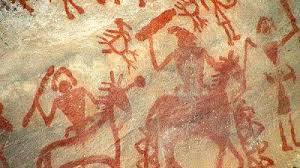 Details of the many amazing Prehistoric paintings
Details of the many amazing Prehistoric paintings
antelopes, and elephants, as well as religious and ritualistic symbols. They have been made primarily with red and white colours, with the occasional use of green and yellow. These colours were prepared using natural dyes, minerals, coal, and animal fat.
The other World Heritage site that being a Buddhist fascinated me is Sanchi as it contains some of the finest examples of ancient Buddhist architecture in India. Located at a distance of 40 Km, Sanchi is most famous for its Great Stupa, which was built by the Mauryan emperor Ashoka. The stupa has four monumental gateways or ‘toranas’ covered with exquisite carvings. These depict scenes from Buddha’s life, Jataka stories and Buddhist history. Sanchi was a major Buddhist centre from the 3rd century BC until the 12th century AD, and also contains the ruins of several other stupas, temples, pillars, monasteries. Absolutely fascinating!
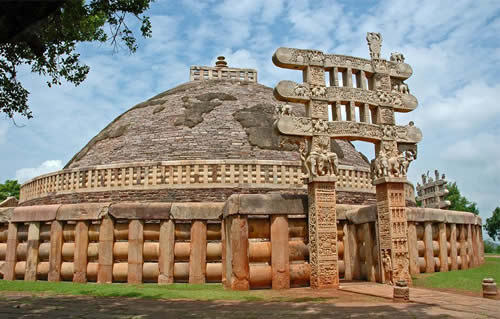 The amazing Buddhist Stupa at Sanchi
The amazing Buddhist Stupa at Sanchi
No visit to Bhopal can finish without going what is for me probably one of the most beautiful mosques in the world. Built by Shah Jehan Begum, the 8th ruler of Bhopal , the Taj-ul- Masjid, is considered one of the largest mosques in Asia. Currently under renovation it is a building of rare beauty.
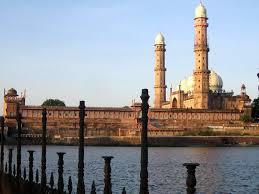 The extraordinary Taj-ul-Masjid built by Begum Shah Jehan
The extraordinary Taj-ul-Masjid built by Begum Shah Jehan
On my last visit, I decided to split my stay between the Jehun Numa Palace Hotel and the new Jehun Numa Retreat. And what a treat it was. Both establishments pride themselves in their gastronomy but all the vegetables and most of the fruits at the Retreat are sources from their own vegetable gardens that are dotted throughout the property and tendered with love by local women. The retreat is set in the midst of a lush park and has 28 suites exquisitely decorated by Her Royal Highness Begum Bano. The rooms and common areas are an epitome of what I call, understated luxury where even the smallest detail has been considered but nothing is pretentious. The pool and spa is also beautiful and simple in tone with the rest of the property.
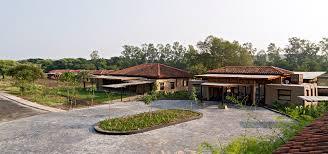 The entrance to the Jehan Numa Retreat
The entrance to the Jehan Numa Retreat
 The 28 individual cottages are spacious, exquisitely decorated and have their own private verandas overlooking the vegetable gardens and an exterior shower to glance at the stars while showering!
The 28 individual cottages are spacious, exquisitely decorated and have their own private verandas overlooking the vegetable gardens and an exterior shower to glance at the stars while showering!
Bravo to His Highness Prince Zafar Rashid of Bhopal who is the director of this wonderful property and to his mother the exquisitely elegant and ravishing, Begum Sonia who I saw inspecting the property and assuring herself that even the most seasoned traveler would not leave disappointed.
And may I also suggest that if you are interested in history as I am, there is no more fascinating story than that of the Bourbon prince, Jean Phillipe, the son of the Constable of France and who ended up as Head of the Imperial Army of the Great Moghul, Akbar. His descendants, as I have mentioned before came to Bhopal and Prince Balthazar I and later his son, Prince Sebastian were both Prime Ministers of Bhopal. So why not write to the current head of the family, Prince Balthazar IV of Bourbon-Bhopal and request an audience and listen to the fascinating first hand account of the adventures of the Indian Bourbons.
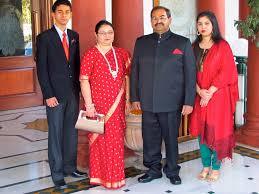 H.R.H Prince Balthazar IV of Bourbon-Bhopal with his family.
H.R.H Prince Balthazar IV of Bourbon-Bhopal with his family.
I highly recommend all my readers that when they next come to India they visit Bhopal. You will not regret it.
February 27, 2016
Royal India
At the height, the Princely States during the British Raj ruled over one-third of the Asian sub-continent, with a population of 75 million under their suzerain. Famed for their extravagance and frivolity, they were – like most aristocrats, eccentric through and through. But India’s royals were not merely jewels in Queen Victoria’s Imperial crown, they were the descendants of ancient warring dynasties that could trace their blood lines back centuries. And they have throughout, the centuries woven a rich cultural tapestry in their territories and bequeathed India with a unique and dazzling legacy.
At times exotic, at times generous they were also cruel, imperious, ascetic, selfish, quirky, charming, hedonistic, self-indulgent, subtle and refined. They possessed all the human virtues and shortcomings. Potent and supreme wielders of power , their splendor and wealth beguiled and fascinated the British and European public.
 The Fabulous Umaid Bhawan Palace in Jodphur
The Fabulous Umaid Bhawan Palace in Jodphur
Prolific patrons of the arts, the indigenous ruling class were particularly fixated with jewels and trinkets. Indeed, so much Cartier was bought by the Maharaja of Patiala and his circle that the jeweler began to create whole collections catering to this burgeoning new Eastern clientele. The famed Patiala necklace was in fact the largest single commission Cartier ever executed: containing a grand total of 29.300 diamonds!
 His Highness Maharaja Yadavinder Singh of Patiala seen wearing the fabled platinum necklace and Maharaja Yadavinder Singh wearing the Patiala necklace in 1946.
His Highness Maharaja Yadavinder Singh of Patiala seen wearing the fabled platinum necklace and Maharaja Yadavinder Singh wearing the Patiala necklace in 1946.
There are also other truly stunning examples of excess, some notable if only for their peculiarity. The Maharaja of Gwalior was known to serve his dinner guests using a mobile bar in the form of a silver toy train, while the Maharaja of Kotah hunted tigers in nothing less than a custom made Rolls Royce. The Maharaja of Kapurthala even had a small replica of Versailles constructed as his residence. In fact , collecting the bizarre and the unusual consistently remained the norm rather than the exception. Osman Ali Khan, the last ruling Nizam of Hyderabad, used a 185 carat Jacob diamond as a paperweight, but having found it in his father’s shoe, he was apparently unaware of its 20 million Pound value! His coffers were practically overflowing with jewels, so perhaps the negligence is forgivable. However, despite being the world’s richest Indian, he had some surprisingly miserable qualities too. Refusing to buy cigarettes, he smoked cigarette butts his entire life!
His prodigious appetite for sex may have accounted for his shrewd money saving schemes. Not only was he said to have the largest pornographic collection in the world, but also 86 mistresses and 100 illegitimate children
 His Exalted Highness Nizam Osman Ali Khan of Hyderabad, considered one of the richest in the world of his time.
His Exalted Highness Nizam Osman Ali Khan of Hyderabad, considered one of the richest in the world of his time.
The Nizam is not the only Indian ruler whose bedroom antics could be described as decadent. The Nawab of Bahawalpur ordered a custom made bed from Christophel in Paris which was ornamented with nude female statuettes. It was decorated with 290 kg of silver and, using ingenious mechanics linked to the mattress, the Nawab was able to set the figures in motion so they simultaneously fanned and winked at him as he lay in repose.
Whether it was cars or clothes, jewels or ornaments, monogrammed crockery, turbans, gold tongue scrapers, the Indian royals ordered the best and most expensive items from around the world. The luxury houses of Paris, London and Milan all enjoyed their custom.
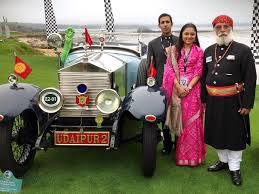 His Highness Arvind Singh, Maharana of Mewar with his daughter Princess Padmaja and son-in-law, Prince Kutch of Santranpur.
His Highness Arvind Singh, Maharana of Mewar with his daughter Princess Padmaja and son-in-law, Prince Kutch of Santranpur.
So much so that in 1928 public opinion and the British press reflected the view that: “Indian Royals have nothing to do except live in luxury and spend money with a shovel”. This portrayal served the British government well. The pomp and ceremony was encouraged to entertain the rulers in banalities and erode their power.
During the independence process, the rulers were given the choice to merge their states into India, Pakistan or stay independent. This last choice was only taken by the Nizam of Hyderabad to have his nation military annexed by India at a cost of close to 40.000 lives. Those rulers who were to choose to stay within the new India, were guaranteed in its Constitution not only their historical privileges but also a Privy Purse in accordance to the size and revenues produced by their states. Fearful of the political power that some members of the royal families still possessed in the sixties and early seventies, Indira Ghandi’s government reneged on those promises made by her father- the first Prime Minister of the independent Republic- and unceremoniously stripped them of their titles and income in 1971 by passing the infamous law of De-recognition of the Princes as it was to be known.
 Her Highness Maharani Gayatri Devi of Jaipur. She was arrested during the Emergency rule of Indira Ghandi due to political vendetta on false accusation of violating tax laws, and served 5 months!
Her Highness Maharani Gayatri Devi of Jaipur. She was arrested during the Emergency rule of Indira Ghandi due to political vendetta on false accusation of violating tax laws, and served 5 months!
It was the end of a long and opulent era, but it has not necessarily resulted in the complete demise of royal involvement in the country, Although some rulers became penniless and destitute, many others were reborn as entrepreneurs, conservationists, diplomats, sportsmen or politicians. Their palaces have since become hotels and museums and they contribute to the economic and commercial regeneration of the modern Republic in many other ways too.
His Highness The Late Maharaja of Mysore sitting on his throne in the late eighties.
Historic ties have remained- albeit in a different guise- and many families continue to feel a sense of obligation to their former population, founding institutes and charitable organizations in lieu of royal patronage. The creation of the Bourbon-Bhopal Welfare Society by Prince Balthazar IV of Bourbon-Bhopal is but one example of this. The Maharaja of Jodphur has also put his capital on the global map as a sporting and cultural center. Maharana Arvind Singh Mewar has done a magnificent job in Udaipur through the Maharana of Mewar Charitable foundation which even received an award at the United Nations in New York in 2012. Other former monarchs have played an integral role in the preservation of India’s royal heritage. Princess Siddhi of Bikaner who set up the Priachina Museum is one such custodian.
 H.R.H. Prince Balthazar IV of Bourbon-Bhopal, Count of Clermont and his family
H.R.H. Prince Balthazar IV of Bourbon-Bhopal, Count of Clermont and his family
And, where funds have allowed, the modern day descendants of the Kings and Queens of India, continue to lead lavish and luxurious lifestyles. Weddings and birthdays present the perfect opportunity to hark back to ancient privileges but also herald the wealth and promise of a new generation. Monarchy no longer exists in India but, whether the political classes like it or not, still does and will continue to do so.
September 27, 2015
Why we must save Civil Society organizations that are under attack by goverments.
It is of great concern that governments around the world and even governments in democratic countries are threatening Civil Society Organizations such as Avaaz, Greenpeace and others by passing draconian laws to limit their influence and punitive measures against them and their followers.
One of the main organizations under attack is Avaaz—meaning “voice” in several European, Middle Eastern and Asian languages—launched in 2007 with a simple democratic mission: organize citizens of all nations to close the gap between the world we have and the world most people everywhere want and since then has exploded to become the globe’s largest and most powerful online activist network and governments don’t like this at all as Avaaz empowers millions of people from all walks of life to take action on pressing global, regional and national issues, from corruption and poverty to conflict and climate change.
So Avaaz and other Civil Society Organizations are under grave threat as Governments worldwide are passing ‘gag laws’, prohibiting protest and intimidating or closing down organisations in the biggest crackdown on civil society in a generation.
It isn’t just repressive regimes like Egypt that kick out Avaaz staff and those of other Civil Society Organizations. In India, the biggest democracy in the world, Avaaz has been vilified and harassed by the government. In Spain Avaazers could be fined up to 600,000 euros just for participating in a peaceful protest. In Israel a draft law threatens to label brave human rights organisations as “foreign agents”, and cut off their international funds. And in Uganda a government body can dissolve any group it doesn’t like!
Over 60 countries now have laws that inhibit non-governmental groups.
Human rights organisations and campaign groups are facing their biggest crackdown in a generation as a wave of countries pass restrictive laws and curtail activity. Almost half the world’s states have implemented controls that affect tens of thousands of organisations across the globe.
Over the past three years, more than 60 countries have passed or drafted laws that curtail the activity of non-governmental and civil society organisations. Ninety-six countries have taken steps to inhibit NGOs from operating at full capacity, in what the Carnegie Endowment calls a “viral-like spread of new laws” under which international aid groups and their local partners are vilified, harassed, closed down and sometimes expelled.
James Savage, of Amnesty International, says: “This global wave of restrictions has a rapidity and breadth to its spread we’ve not seen before, that arguably represents a seismic shift and closing down of human rights space not seen in a generation.
“There are new pieces of legislation almost every week – on foreign funding, restrictions in registration or association, anti-protest laws, gagging laws. And, unquestionably, this is going to intensify in the coming two to three years. You can visibly watch the space shrinking.”
Among countries that have recently cracked down on NGO and civil society activity are:
• India The government labelled the environmental NGO Greenpeace as “anti-national”, blocking its bank accounts, deporting foreign workers and preventing local staff from travelling abroad. Licences for more than 13,000 organisations have been revoked for alleged violations of a law on foreign funding.
• China Under a new law, NGOs will be required to register with the police and obtain approval to carry out activities, and submit annual activity plans and budgets to a supervisory unit.
.Russia “Undesirable” international NGOs can be shut down. In July, the Washington-based National Endowment for Democracy became the first organisation to be banned under the new law.
 Russian Security Forces attacking peaceful demonstrators in Moscu.
Russian Security Forces attacking peaceful demonstrators in Moscu.
• Egypt Sweeping new legislation on “terrorist entities” could encompass human rights and civil society organisations. NGOs are already required to register with the government.
• Uganda A government-appointed board will have power to reject or dissolve NGOs and civil society organisations. Harsh penalties – including imprisonment – await individuals who violate a law enacted in April.
• Cambodia A new law requires registration and annual reports to be filed with the government. NGOs can be disbanded if their activities “jeopardise peace, stability and public order or harm the national security, national unity, culture and traditions of Cambodian society”.
Tom Carothers, of the Carnegie Endowment, says: “Big countries that have been the drivers of this crackdown have continued to lead the way – and smaller countries are following their lead.” Restrictive measures are both formal, in the form of legislation, and informal – harassment, intimidation, demonisation, bureaucratic burdens. “Just counting NGO laws doesn’t quite give you the full picture.”
The causes of increasing restrictions are complex, say organisations that monitor civil society activity, but broadly fall into three categories.
First is the shift in political power away from the west, the main source of funding for domestic civil society groups and the base for most big international NGOs. At the end of the cold war, the US and other western countries stepped in to assist newly democratising countries and burgeoning grassroots organisations.
But, more recently, many governments in the developing and post-communist world have pushed back against what they see as western interference. “This is the end of the post-cold war period in which [the west] felt that liberal democracy and western concepts of human rights were spreading around the world, to a period in which there’s a relativisation of political values and the questioning of a common narrative,” says Carothers.
Second, governments have woken up to the power of civil society – particularly after pro-democracy uprisings in former communist states and the revolutionary wave that swept through the Middle East.
“In most countries where leaders don’t allow a lot of pluralism or democracy, they’ve learned to tame opposition political parties,” Carothers says. “But the deepest fear of repressive governments is that they wake up in the morning, open the shutters of the presidential palace, and look out to find 100,000 citizens in the square saying ‘enough!’. That’s scary and uncontrollable,” particularly, Carothers adds, when coupled with technological skill in harnessing the power of social media to organise and spread messages.
The third cause of the NGO crackdown is the proliferation of counter-terrorism measures – often promoted by the west – that sweep civil society organisations into their embrace, either inadvertently or deliberately. Legitimate measures to curb funding of and money-laundering by terrorist organisations often have a debilitating effect on NGOs.
This is affecting civil society in the west itself, and has consequences around the world, say campaigners. Savage says states such as the UK and US that have been supportive of NGOs and been human rights defenders are, because of the practices they are introducing in their own states, undermining their ability to have positive influence and push back at restrictions that are “much graver” in places such as Russia and Egypt. “That’s a very worrying new trend,” he says.
High-profile global organisations with strong reputations, such as Amnesty International, have greater protection from the worst effects of the crackdown – although Greenpeace was targeted in India, and Save The Children was temporarily expelled from Pakistan.
But, according to Poonam Joshi of the Fund for Global Human Rights, the effect on domestic NGOs and civil society groups can be paralysing. “You see organisations go very quiet, no one wants to rock the boat. And many face a new bureaucratic burden that affects their operational capacity.”
In response, the UN has appointed Maina Kiai as a special rapporteur to focus on freedom of expression and assembly. The EU organised a global forum of more than 200 civil society participants last December. Development branches of western governments, foundations and global NGOs are training and advising local groups on how to respond to new restrictions. Amnesty International has identified defending NGOs and human rights campaigners as one of its five strategic goals, and will launch a global campaign next year.
But reversing the trend is challenging. “Once laws come in, it’s very difficult to repeal them,” says Joshi. “This is an uphill struggle, but a critical one.”
The new assault on NGOs has intensified principally in countries such as China, Russia and central Asia, where notions of democracy range from primitive to non-existent. But, worryingly, an array of democracies or semi-democracies have joined the list including Spain, Israel, India, Ecuador and Hungary.
I raise my voice to help Avaaz by donating so that they can get a team of the best international pro-democracy lawyers. They already have a small but efficient team but this crackdown by governments is a declaration of war against free speech. It isn’t just repressive regimes like Egypt that kick out Avaaz staff. In India, the biggest democracy in the world, Avaaz has been vilified and harassed by the government. In Spain Avaazers could be fined up to 600,000 euros just for participating in a peaceful protest. In Israel a draft law threatens to label brave human rights organisations as “foreign agents”, and cut off their international funds. And in Uganda a government body can dissolve any group it doesn’t like!
We already know that having a top legal team works. For example, when the South African government tried to censor Avaaz’s campaign against the lion bone trade, they took them to court and won a landmark free speech case that set a standard for the whole country. And with enough support, they with us, can together:
Expand the Avaaz legal team to have top class representation where Avaaz is under attack
Hire lawyers to challenge Hungarian officials’ abuse of EU or international law.
Build a data base of the best pro-democracy lawyers in the world and bring them together to form the Avaaz pro-democracy law group
Develop legal challenges and lawsuits to take on the rogues whenever they come after us.
This last decade has seen a surge of people power with the Arab Springs, massive anti corruption protests in India, Brazil and Spain, and people raising their voices and taking to the streets in droves. These regressive laws show our strength. We can’t now let governments crush an informed and organised citizenship, it is a crucial pillar of democracy and we must defend it.
 Protesting against the gag law in Spain which a panel of United Nation human rights experts and the Human Rights Watch advocacy group have both condemned the law. (Associated Press).
Protesting against the gag law in Spain which a panel of United Nation human rights experts and the Human Rights Watch advocacy group have both condemned the law. (Associated Press).
There are moments where risking everything is necessary to preserve the very core of what Avaaz has worked so hard to create. That’s what they did when taking on powerful media barons in England and government cronies in Canada. That’s what they are poised to do now in India and Spain if they can raise the funds. It’s what they can do everywhere for us, Civil Society.
PLEASE DONATE GENEROUSLY because we need to be able to be heard. Democracy is under fire with multinational companies controlling the world economy and the governments of the world who in turn want to control us by preventing we speak out.
I suggest that for all of those who have yet not read our latest novel, The Twilight of the Fourth World you do so and maybe all of us together with organizations such as Aavaz can prevent things getting worst.
Why we must save Civil Society organizations that are under attack by goverments?
It is of great concern that goverments around the world and even governments in democratic countries are threatening Civil Society Organizations such as Avaaz, Greenpeace and others by passing draconian laws to limit their influence and punitive measures against them and their followers.
One of the main organizations under atack is Avaaz—meaning “voice” in several European, Middle Eastern and Asian languages—launched in 2007 with a simple democratic mission: organize citizens of all nations to close the gap between the world we have and the world most people everywhere want and since then has exploded to become the globe’s largest and most powerful online activist network and governments don’t like this at all as Avaaz empowers millions of people from all walks of life to take action on pressing global, regional and national issues, from corruption and poverty to conflict and climate change.
So Avaaz and other Civil Society Organizations are under grave threat as Governments worldwide are passing ‘gag laws’, prohibiting protest and intimidating or closing down organisations in the biggest crackdown on civil society in a generation.
It isn’t just repressive regimes like Egypt that kick out Avaaz staff and those of other Civil Society Organizations. In India, the biggest democracy in the world, Avaaz has been vilified and harassed by the government. In Spain Avaazers could be fined up to 600,000 euros just for participating in a peaceful protest. In Israel a draft law threatens to label brave human rights organisations as “foreign agents”, and cut off their international funds. And in Uganda a government body can dissolve any group it doesn’t like!
Over 60 countries now have laws that inhibit non-governmental groups.
Human rights organisations and campaign groups are facing their biggest crackdown in a generation as a wave of countries pass restrictive laws and curtail activity. Almost half the world’s states have implemented controls that affect tens of thousands of organisations across the globe.
Over the past three years, more than 60 countries have passed or drafted laws that curtail the activity of non-governmental and civil society organisations. Ninety-six countries have taken steps to inhibit NGOs from operating at full capacity, in what the Carnegie Endowment calls a “viral-like spread of new laws” under which international aid groups and their local partners are vilified, harassed, closed down and sometimes expelled.
James Savage, of Amnesty International, says: “This global wave of restrictions has a rapidity and breadth to its spread we’ve not seen before, that arguably represents a seismic shift and closing down of human rights space not seen in a generation.
“There are new pieces of legislation almost every week – on foreign funding, restrictions in registration or association, anti-protest laws, gagging laws. And, unquestionably, this is going to intensify in the coming two to three years. You can visibly watch the space shrinking.”
Among countries that have recently cracked down on NGO and civil society activity are:
• India The government labelled the environmental NGO Greenpeace as “anti-national”, blocking its bank accounts, deporting foreign workers and preventing local staff from travelling abroad. Licences for more than 13,000 organisations have been revoked for alleged violations of a law on foreign funding.
• China Under a new law, NGOs will be required to register with the police and obtain approval to carry out activities, and submit annual activity plans and budgets to a supervisory unit.
.Russia “Undesirable” international NGOs can be shut down. In July, the Washington-based National Endowment for Democracy became the first organisation to be banned under the new law.
 Russian Security Forces attacking peaceful demonstrators in Moscu.
Russian Security Forces attacking peaceful demonstrators in Moscu.
• Egypt Sweeping new legislation on “terrorist entities” could encompass human rights and civil society organisations. NGOs are already required to register with the government.
• Uganda A government-appointed board will have power to reject or dissolve NGOs and civil society organisations. Harsh penalties – including imprisonment – await individuals who violate a law enacted in April.
• Cambodia A new law requires registration and annual reports to be filed with the government. NGOs can be disbanded if their activities “jeopardise peace, stability and public order or harm the national security, national unity, culture and traditions of Cambodian society”.
Tom Carothers, of the Carnegie Endowment, says: “Big countries that have been the drivers of this crackdown have continued to lead the way – and smaller countries are following their lead.” Restrictive measures are both formal, in the form of legislation, and informal – harassment, intimidation, demonisation, bureaucratic burdens. “Just counting NGO laws doesn’t quite give you the full picture.”
The causes of increasing restrictions are complex, say organisations that monitor civil society activity, but broadly fall into three categories.
First is the shift in political power away from the west, the main source of funding for domestic civil society groups and the base for most big international NGOs. At the end of the cold war, the US and other western countries stepped in to assist newly democratising countries and burgeoning grassroots organisations.
But, more recently, many governments in the developing and post-communist world have pushed back against what they see as western interference. “This is the end of the post-cold war period in which [the west] felt that liberal democracy and western concepts of human rights were spreading around the world, to a period in which there’s a relativisation of political values and the questioning of a common narrative,” says Carothers.
Second, governments have woken up to the power of civil society – particularly after pro-democracy uprisings in former communist states and the revolutionary wave that swept through the Middle East.
“In most countries where leaders don’t allow a lot of pluralism or democracy, they’ve learned to tame opposition political parties,” Carothers says. “But the deepest fear of repressive governments is that they wake up in the morning, open the shutters of the presidential palace, and look out to find 100,000 citizens in the square saying ‘enough!’. That’s scary and uncontrollable,” particularly, Carothers adds, when coupled with technological skill in harnessing the power of social media to organise and spread messages.
The third cause of the NGO crackdown is the proliferation of counter-terrorism measures – often promoted by the west – that sweep civil society organisations into their embrace, either inadvertently or deliberately. Legitimate measures to curb funding of and money-laundering by terrorist organisations often have a debilitating effect on NGOs.
This is affecting civil society in the west itself, and has consequences around the world, say campaigners. Savage says states such as the UK and US that have been supportive of NGOs and been human rights defenders are, because of the practices they are introducing in their own states, undermining their ability to have positive influence and push back at restrictions that are “much graver” in places such as Russia and Egypt. “That’s a very worrying new trend,” he says.
High-profile global organisations with strong reputations, such as Amnesty International, have greater protection from the worst effects of the crackdown – although Greenpeace was targeted in India, and Save The Children was temporarily expelled from Pakistan.
But, according to Poonam Joshi of the Fund for Global Human Rights, the effect on domestic NGOs and civil society groups can be paralysing. “You see organisations go very quiet, no one wants to rock the boat. And many face a new bureaucratic burden that affects their operational capacity.”
In response, the UN has appointed Maina Kiai as a special rapporteur to focus on freedom of expression and assembly. The EU organised a global forum of more than 200 civil society participants last December. Development branches of western governments, foundations and global NGOs are training and advising local groups on how to respond to new restrictions. Amnesty International has identified defending NGOs and human rights campaigners as one of its five strategic goals, and will launch a global campaign next year.
But reversing the trend is challenging. “Once laws come in, it’s very difficult to repeal them,” says Joshi. “This is an uphill struggle, but a critical one.”
The new assault on NGOs has intensified principally in countries such as China, Russia and central Asia, where notions of democracy range from primitive to non-existent. But, worryingly, an array of democracies or semi-democracies have joined the list including Spain, Israel, India, Ecuador and Hungary.
I raise my voice to help Avaaz by donating so that they can get a team of the best international pro-democracy lawyers. They already have a small but efficient team but this crackdown by governments is a declaration of war against free speech. It isn’t just repressive regimes like Egypt that kick out Avaaz staff. In India, the biggest democracy in the world, Avaaz has been vilified and harassed by the government. In Spain Avaazers could be fined up to 600,000 euros just for participating in a peaceful protest. In Israel a draft law threatens to label brave human rights organisations as “foreign agents”, and cut off their international funds. And in Uganda a government body can dissolve any group it doesn’t like!
We already know that having a top legal team works. For example, when the South African government tried to censor Avaaz’s campaign against the lion bone trade, they took them to court and won a landmark free speech case that set a standard for the whole country. And with enough support, they with us, can together:
Expand the Avaaz legal team to have top class representation where Avaaz is under attack
Hire lawyers to challenge Hungarian officials’ abuse of EU or international law.
Build a data base of the best pro-democracy lawyers in the world and bring them together to form the Avaaz pro-democracy law group
Develop legal challenges and lawsuits to take on the rogues whenever they come after us.
This last decade has seen a surge of people power with the Arab Springs, massive anti corruption protests in India, Brazil and Spain, and people raising their voices and taking to the streets in droves. These regressive laws show our strength. We can’t now let governments crush an informed and organised citizenship, it is a crucial pillar of democracy and we must defend it.
 Protesting against the gag law in Spain which a panel of United Nation human rights experts and the Human Rights Watch advocacy group have both condemned the law. (Associated Press).
Protesting against the gag law in Spain which a panel of United Nation human rights experts and the Human Rights Watch advocacy group have both condemned the law. (Associated Press).
There are moments where risking everything is necessary to preserve the very core of what Avaaz has worked so hard to create. That’s what they did when taking on powerful media barons in England and government cronies in Canada. That’s what they are poised to do now in India and Spain if they can raise the funds. It’s what they can do everywhere for us, Civil Society.
PLEASE DONATE GENEROUSLY because we need to be able to be heard. Democracy is under fire with multinational companies controlling the world economy and the governments of the world who in turn want to control us by preventing we speak out.
I suggest that for all of those who have yet not read our latest novel, The Twilight of the Fourth World you do so and maybe all of us together with organizations such as Aavaz can prevent things getting worst.
September 15, 2015
The disgraceful attitude of the Six wealthiest Muslim nations towards the refugees.
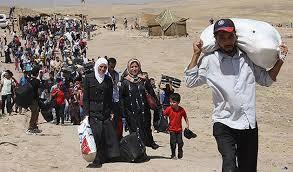 Thousands of refugees escaping the war in Syria, Libya and other countries of the region.
Thousands of refugees escaping the war in Syria, Libya and other countries of the region.
Not since the II World War have we seen this dramatic images of thousand and thousands of people trying by all means to escape the civil war that we, the West have created in Iraq, Libya and Syria. The images move even the most cold-hearted as these poor people of all social backgrounds leave their countries with nothing and in the hope of reaching safety.
We have successfully changed the regimes of terrible dictators in Iraq and Libya to replace them by a civil war. In fact both these states can be considered failed states. In Syria, Assad still manages to hold on to part of his power thanks to the Russians and Chinese but at a terrible human cost as Syria is in the midst of a bloody civil war with no end in sight.
So these circumstances have created a refuge crisis. Europe has been accused of not doing enough and of reacting late to the crisis but having said this we have accepted close to 400.000 refuges to date. Europe has also been accused of preferring Christian refugees to Muslim ones and though the followers of both religions are victims of this tragedy, it is my opinion that the Christians should be accepted first in order to protect them from the radicals in the countries where they are escaping from.
The governments of the less wealthy Muslim countries such as the Kingdoms of Morocco and Jordan, Lebanon, Egypt and Tunisia have behaved themselves with incredible generosity in this crisis and all have accepted large numbers of refugees though their resources have been put to the limit. Bravo for them but the question now is why the 6 wealthiest Muslim countries (Saudi Arabia, Qatar, Oman, Bahrein, Kuwait and the United Arab Emirates) do not feel any empathy for these hundreds of thousands of people who follow their religion and that in need of desperate finding a place to restart their lives? Why are they not moved by images like the following one?
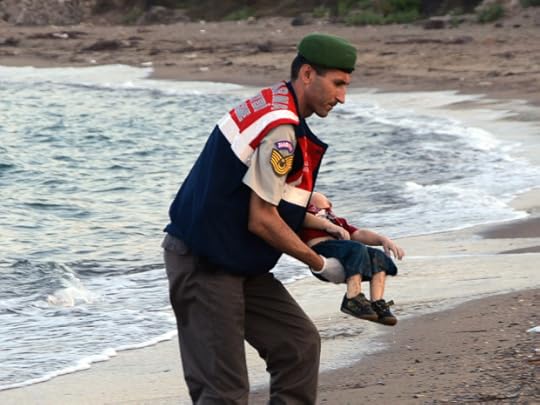 A paramilitary police officer carries the lifeless body of Aylan Kurdi, 3, after a number of migrants died and a smaller number were reported missing after boats carrying them to the Greek island of Kos capsized, near the Turkish resort of Bodrum early Wednesday, Sept. 2, 2015. The family ó Abdullah, his wife Rehan and their two boys, 3-year-old Aylan and 5-year-old Galip ó embarked on the perilous boat journey only after their bid to move to Canada was rejected. The tides also washed up the bodies of Rehan and Galip on Turkey’s Bodrum peninsula Wednesday, Abdullah survived the tragedy. (AP Photo/DHA) TURKEY OUT
A paramilitary police officer carries the lifeless body of Aylan Kurdi, 3, after a number of migrants died and a smaller number were reported missing after boats carrying them to the Greek island of Kos capsized, near the Turkish resort of Bodrum early Wednesday, Sept. 2, 2015. The family ó Abdullah, his wife Rehan and their two boys, 3-year-old Aylan and 5-year-old Galip ó embarked on the perilous boat journey only after their bid to move to Canada was rejected. The tides also washed up the bodies of Rehan and Galip on Turkey’s Bodrum peninsula Wednesday, Abdullah survived the tragedy. (AP Photo/DHA) TURKEY OUTThis six countries have not offered to resettle a single refugee and I find this outstanding as it goes against the teachings of their Holy book. So why Europe is criticized for taking only close to 400.000 refugess these 6 wealthy Muslim countries so far have practically not even been rebuked for their uncharitable attitude toward this terrible suffering.
According to the Washington Post:
“That’s a shocking figure, given these countries’ relative proximity to Syria, as well as the incredible resources at their disposal. As Sultan Sooud al-Qassemi, a Dubai-based political commentator, observes, these countries include some of the Arab world’s largest military budgets, its highest standards of living, as well as a lengthy history — especially in the case of the United Arab Emirates — of welcoming immigrants from other Arab nations and turning them into citizens.
Moreover, these countries aren’t totally innocent bystanders. To varying degrees, elements within Saudi Arabia, Qatar, the U.A.E. and Kuwait have invested in the Syrian conflict, playing a conspicuous role in funding and arming a constellation of rebel and Islamist factions fighting the regime of Syrian President Bashar al-Assad.
None of these countries are signatories of the United Nations’ 1951 Refugee Convention, which defines what a refugee is and lays out their rights, as well as the obligations of states to safeguard them. For a Syrian to enter these countries, they would have to apply for a visa, which, in the current circumstances, is rarely granted. According to the BBC, the only Arab countries where a Syrian can travel without a visa are Algeria, Mauritania, Sudan and Yemen — hardly choice or practical destinations.
A spokesman for UNHCR, the U.N.’s refugee agency, told Bloomberg that there are roughly 500,000 Syrians living in Saudi Arabia, though they are not classified as refugees and it isn’t clear when the majority of them arrived in the country.
Like European countries, Saudi Arabia and its neighbors also have fears over new arrivals taking jobs from citizens, and may also invoke concerns about security and terrorism. But the current gulf aid outlay for Syrian refugees, which amounts to collective donations under $1 billion (the United States has given four times that sum), seems short — and is made all the more galling when you consider the vast sums Saudi Arabia and the U.A.E. poured into this year’s war effort in Yemen, an intervention some consider a strategic blunder.
As Bobby Ghosh, managing editor of the news site Quartz, points out, the gulf states in theory have a far greater ability to deal with large numbers of arrivals than Syria’s more immediate and poorer neighbors, Lebanon and Jordan:
The region has the capacity to quickly build housing for the refugees. The giant construction companies that have built the gleaming towers of Dubai, Abu Dhabi, and Riyadh should be contracted to create shelters for the influx. Saudi Arabia has plenty of expertise at managing large numbers of arrivals: It receives an annual surge of millions of Hajj pilgrims to Mecca. There’s no reason all this knowhow can’t be put to humanitarian use.
No reason other than either indifference or a total lack of political will. In social media, many are calling for action. The Arabic hashtag #Welcoming_Syria’s_refugees_is_a_Gulf_duty was tweeted more than 33,000 times in the past week, according to the BBC.”
I could not agree more with this point of view.
As the columnist Qassemi writes: “The Gulf must realize that now is the time to change their policy regarding accepting refugees from the Syria crisis. It is the moral, ethical and responsible step to take.”
The disgraceful attitude of the Six wealthies Muslim nations towards the refugees.
 Thousands of refugees escaping the war in Syria, Libya and other countries of the region.
Thousands of refugees escaping the war in Syria, Libya and other countries of the region.
Not since the II World War have we seen this dramatic images of thousand and thousands of people trying by all means to escape the civil war that we, the West have created in Iraq, Libya and Syria. The images move even the most cold-hearted as these poor people of all social backgrounds leave their countries with nothing and in the hope of reaching safety.
We have successfully changed the regimes of terrible dictators in Iraq and Libya to replace them by a civil war. In fact both these states can be considered failed states. In Syria, Assad still manages to hold on to part of his power thanks to the Russians and Chinese but at a terrible human cost as Syria is in the midst of a bloody civil war with no end in sight.
So these circumstances have created a refuge crisis. Europe has been accused of not doing enough and of reacting late to the crisis but having said this we have accepted close to 400.000 refuges to date. Europe has also been accused of preferring Christian refugees to Muslim ones and though the followers of both religions are victims of this tragedy, it is my opinion that the Christians should be accepted first in order to protect them from the radicals in the countries where they are escaping from.
The governments of the less wealthy Muslim countries such as the Kingdoms of Morocco and Jordan, Lebanon, Egypt and Tunisia have behaved themselves with incredible generosity in this crisis and all have accepted large numbers of refugees though their resources have been put to the limit. Bravo for them but the question now is why the 6 wealthiest Muslim countries (Saudi Arabia, Qatar, Oman, Bahrein, Kuwait and the United Arab Emirates) do not feel any empathy for these hundreds of thousands of people who follow their religion and that in need of desperate finding a place to restart their lives? Why are they not moved by images like the following one?
 A paramilitary police officer carries the lifeless body of Aylan Kurdi, 3, after a number of migrants died and a smaller number were reported missing after boats carrying them to the Greek island of Kos capsized, near the Turkish resort of Bodrum early Wednesday, Sept. 2, 2015. The family ó Abdullah, his wife Rehan and their two boys, 3-year-old Aylan and 5-year-old Galip ó embarked on the perilous boat journey only after their bid to move to Canada was rejected. The tides also washed up the bodies of Rehan and Galip on Turkey’s Bodrum peninsula Wednesday, Abdullah survived the tragedy. (AP Photo/DHA) TURKEY OUT
A paramilitary police officer carries the lifeless body of Aylan Kurdi, 3, after a number of migrants died and a smaller number were reported missing after boats carrying them to the Greek island of Kos capsized, near the Turkish resort of Bodrum early Wednesday, Sept. 2, 2015. The family ó Abdullah, his wife Rehan and their two boys, 3-year-old Aylan and 5-year-old Galip ó embarked on the perilous boat journey only after their bid to move to Canada was rejected. The tides also washed up the bodies of Rehan and Galip on Turkey’s Bodrum peninsula Wednesday, Abdullah survived the tragedy. (AP Photo/DHA) TURKEY OUTThis six countries have not offered to resettle a single refugee and I find this outstanding as it goes against the teachings of their Holy book. So why Europe is criticized for taking only close to 400.000 refugess these 6 wealthy Muslim countries so far have practically not even been rebuked for their uncharitable attitude toward this terrible suffering.
According to the Washington Post:
“That’s a shocking figure, given these countries’ relative proximity to Syria, as well as the incredible resources at their disposal. As Sultan Sooud al-Qassemi, a Dubai-based political commentator, observes, these countries include some of the Arab world’s largest military budgets, its highest standards of living, as well as a lengthy history — especially in the case of the United Arab Emirates — of welcoming immigrants from other Arab nations and turning them into citizens.
Moreover, these countries aren’t totally innocent bystanders. To varying degrees, elements within Saudi Arabia, Qatar, the U.A.E. and Kuwait have invested in the Syrian conflict, playing a conspicuous role in funding and arming a constellation of rebel and Islamist factions fighting the regime of Syrian President Bashar al-Assad.
None of these countries are signatories of the United Nations’ 1951 Refugee Convention, which defines what a refugee is and lays out their rights, as well as the obligations of states to safeguard them. For a Syrian to enter these countries, they would have to apply for a visa, which, in the current circumstances, is rarely granted. According to the BBC, the only Arab countries where a Syrian can travel without a visa are Algeria, Mauritania, Sudan and Yemen — hardly choice or practical destinations.
A spokesman for UNHCR, the U.N.’s refugee agency, told Bloomberg that there are roughly 500,000 Syrians living in Saudi Arabia, though they are not classified as refugees and it isn’t clear when the majority of them arrived in the country.
Like European countries, Saudi Arabia and its neighbors also have fears over new arrivals taking jobs from citizens, and may also invoke concerns about security and terrorism. But the current gulf aid outlay for Syrian refugees, which amounts to collective donations under $1 billion (the United States has given four times that sum), seems short — and is made all the more galling when you consider the vast sums Saudi Arabia and the U.A.E. poured into this year’s war effort in Yemen, an intervention some consider a strategic blunder.
As Bobby Ghosh, managing editor of the news site Quartz, points out, the gulf states in theory have a far greater ability to deal with large numbers of arrivals than Syria’s more immediate and poorer neighbors, Lebanon and Jordan:
The region has the capacity to quickly build housing for the refugees. The giant construction companies that have built the gleaming towers of Dubai, Abu Dhabi, and Riyadh should be contracted to create shelters for the influx. Saudi Arabia has plenty of expertise at managing large numbers of arrivals: It receives an annual surge of millions of Hajj pilgrims to Mecca. There’s no reason all this knowhow can’t be put to humanitarian use.
No reason other than either indifference or a total lack of political will. In social media, many are calling for action. The Arabic hashtag #Welcoming_Syria’s_refugees_is_a_Gulf_duty was tweeted more than 33,000 times in the past week, according to the BBC.”
I could not agree more with this point of view.
As the columnist Qassemi writes: “The Gulf must realize that now is the time to change their policy regarding accepting refugees from the Syria crisis. It is the moral, ethical and responsible step to take.”
In defense of Eric Duval
I am astonished to have found a web site that is called Eric Duval News and hosted by Word Press that is used to slander him and his wonderful family.
The things that the coward who does not reveal his identity, publishes in his website by using Eric’s name illegally, are outright lies and a criminal act. I am certain that he will be liable under French law for the crime of slander and he will probably face a jail sentence plus a big fine.
Unfortunately, in this time and age, anyone can put on the internet anything they want and there is always an audience ready to believe anything they read without questioning it or at least checking it out with other publications.
I have known Eric Duval over the years when he was Grand Prior of the O.S.J. through which he worked tirelessly in providing humanitarian assistance to many countries in the field of education, sanitation, gender equality, sustainable development etc. He is a true philanthropist and is helped in his remarkable work by his wife and children.
Not happy with attacking Eric, he attacks his charitable work and the organizations with whom he works and this only proves that this person is full of hate and through his hidden agenda, is prepared to try and destroy not only their good reputations but also all their charitable work without any consideration to the thousands of people who benefit from it and with total disregard to those most in need. For me this is totally despicable.
Eric’s charitable work has been recognized with a well deserved award granted by the NGO Women Together at the United Nations in New York in recognition for his work in aid of the less fortunate human beings in need around the world.
I have written to World Press asking them to take down the site because slander and personal vendettas are not a form of freedom of speech. If they don’t, I am sure that the French justice will act sooner than later to protect the reputation of one of its model citizens.
August 2, 2015
Am I mentally ill? According to the DSM-IV, I am!
Is nonconformity and freethinking a mental illness? According to the newest addition of the DSM-IV (Diagnostic and Statistical Manual of Mental Disorders), it certainly is. The manual identifies a new mental illness called “oppositional defiant disorder” or ODD. Defined as an “ongoing pattern of disobedient, hostile and defiant behavior,” symptoms include questioning authority, negativity, defiance, argumentativeness, and being easily annoyed.
The DSM-IV is the manual used by psychiatrists to diagnose mental illnesses and, with each new edition, there are scores of new mental illnesses. Are we becoming sicker? Is it getting harder to be mentally healthy? Authors of the DSM-IV say that it’s because they’re better able to identify these illnesses today. Critics charge that it’s because they have too much time on their hands.
New mental illnesses identified by the DSM-IV include arrogance, narcissism, above-average creativity, cynicism, and antisocial behavior. In the past, these were called “personality traits,” but now they’re diseases. And there are treatments available that of course benefit the pockets of the big Pharma companies.
All of this is a symptom of our over-diagnosing and our over medicating culture. In the last 50 years, the DSM-IV has gone from 130 to 357 mental illnesses. A majority of these illnesses afflict children. Although the manual is an important diagnostic tool for the psychiatric industry, it has also been responsible for social changes. The rise in ADD, bipolar disorder, and depression in children has been largely because of the manual’s identifying certain behaviors as symptoms. A Washington Post article observed that, if Mozart were born today, he would be diagnosed with ADD and “medicated into barren normality.” This situation is not only unacceptable but intolerant.
So us, free thinkers that defy injustice and speak out against it, that are creative and unique are now mentally ill. The Soviet Union used new “mental illnesses” for political repression. People who didn’t accept the beliefs of the Communist Party developed a new type of schizophrenia. They suffered from the delusion of believing communism was wrong. They were isolated, forcefully medicated, and put through repressive “therapy” to bring them back to sanity. This is still done in China, North Korea and other dictatorial regimes.
When the last edition of the DSM-IV was published, identifying the symptoms of various mental illnesses in children, there was a jump in the diagnosis and medication of children. In the United States, some states have laws that allow protective agencies to forcibly medicate, and even make it a punishable crime to withhold medication. This paints a chilling picture for those of us who are nonconformists. Although the authors of the manual claim no ulterior motives but simply better diagnostic practices, the labeling of freethinking and nonconformity as mental illnesses has a lot of potential for abuse. It can easily become a weapon in the arsenal of a repressive state.
So what can I say. I am proud to be mentally ill if being sane means just being a total conformist, another piece that fits perfectly in the jigsaw puzzle or just someone so compliant that is not moved to action by the injustice of the world that we live in or that just can’t be bothered to make this world a beautiful place for all of us to live in as the UNIVERSE intends.
(Edited from Collective Consciousness Website)
July 17, 2015
China’a Uyghur Genocide!
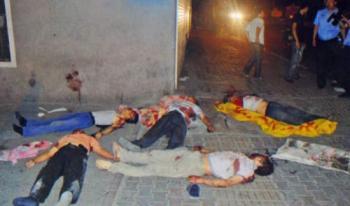 The Chinese have labelled the Uyghurs as Muslim terrorist to justify the crackdown
The Chinese have labelled the Uyghurs as Muslim terrorist to justify the crackdown
Who are the Uyghurs and where do they live? That is what most of you will be asking yourselves as the international press has almost forgotten this ethnic minority that lives in a territory known as East Turkistan under the boot of their Chinese oppressors.
East Turkistan, also known as the Xinjiang Uyghur Autonomous Region of China, lies in the heart of Asia. The current territorial size is 1,626,000 square kilometers (635,000 square miles), which is 4 times the size of California. According to official records in 1949, East Turkistan’s original territories contained 1,820,000 square kilometers of land. The Qinghai and Gansu provinces of China annexed part of the territory as a result of the Chinese communist invasion of 1949. It has a diverse geography. It has grand deserts, magnificent mountains, and beautiful rivers, lakes, grasslands and forests. It is the homeland of the Turkic speaking Uyghurs and other central Asian peoples such as Kazaks, Kyrgyz, Tatars, Uzbeks, and Tajiks. According to the latest Chinese census, the present population of these Muslims is slightly over 11 million; among these, the 8.68 million Uyghurs constitute the majority. However, sources indicate that the Uyghur population is about 18 million.
The invaded country is located beyond a logical boundary of China, the Great Wall. Historically, it is a part of Central Asia, not of China. East Turkistan’s people are not Chinese; they are Turks of Central Asia.
Records show that the Uyghurs have a history of more than 4000 years in East Turkistan. Situated along a section of the legendary Silk Road, Uyghurs played an important role in cultural exchanges between the East and West and developed a unique culture and civilization of their own. The Uyghurs embraced Islam in A.D. 934 during the Karahanid Kingdom. Kashgar, the capital of the Kingdom, quickly became one of the major learning centers of Islam. Art, the sciences, music and literature flourished as Islamic religious institutions nurtured the pursuit of an advanced culture. In this period, hundreds of world-renowned Uyghur scholars emerged. Thousands of valuable books were written. Among these works, the Uyghur scholar Yusuf Has Hajip’s book, Kutatku Bilig (The Knowledge for Happiness, 1069-1070) and Mahmud Kashgari’s Divan-i Lugat-it Turk (a dictionary of Turk languages) are most influential.
The circumstances are similar to those of Tibet. The Islamic Uyghur Kingdom of East Turkestan maintained its independence and prosperity until the Manchu Empire invaded the nation in 1876. After eight years of bloody war, the Manchu Empire formally annexed East Turkistan into its territories and renamed it “Xinjiang” (meaning “New Territory” or “New Frontier”) on November 18, 1884. Uyghur power, stature and culture went into a steep decline after the Manchu invasion. After Chinese Nationalists overthrew the Manchu Empire in 1911, East Turkistan fell under the rule of the nationalist Chinese government. The Uyghurs, who wanted to free themselves from foreign domination, staged numerous uprisings against Nationalist Chinese rule and twice (once in 1933 and again in 1944) succeeded in setting up an independent East Turkistan Republic.
Heavy-handed state repression of all activities associated by the Chinese government with “Separatism” has created a dire human rights environment for the Uyghur Muslim minority population of northwest China. Beijing has for more than a decade claimed to be confronted with “religious extremist forces” and “violent terrorists” in Xinjiang Province, a vast region one-sixth of China’s land area.
East Turkistan is in fact a large, sparsely populated area that has been a site of heavy army and police concentrations since 1949, and is used as a base for nuclear testing, military training, and prison labour facilities. The population of 18 million includes several Turkic-speaking Muslim ethnic groups, of which the Uyghurs, numbering eight million, are the largest. The percentage of ethnic Han Chinese as in Tibet, has grown as a result of government policies from six percent in 1949 to 40 percent at present, and now numbers some 7.5 million people. Much like Tibetans, Uyghurs in Xinjiang have struggled for cultural survival in the face of a government-supported influx by Chinese migrants, as well as harsh repression of political dissent and any expression, however lawful or peaceful, of their distinct identity.
Reports document a pattern of abuse, including political imprisonment, torture, and disappearance. Mosques are summarily closed and the Uyghur language is banned from use in universities. Uyghurs are subjected to compulsory unpaid labour in the construction of a pipeline planned to export local petroleum resources to other parts of China. Uyghurs also continue to be the only population in China consistently subjected to executions for political crimes, and these executions are often both summary and public.
A handful of small-scale explosions aimed at government targets over the past decade have been repeatedly invoked by the Chinese government, particularly since September 11, in support of its strike-hard campaign to crack down on separatism and terrorism. In policy pronouncements for both domestic and international audiences, the government has sought to establish that all separatism is tantamount to Islamic terrorism, and in fact uses the terms interchangeably. The state’s efforts to extinguish the common desire among Uyghurs for autonomy or outright independence appear to have increased the alienation of the population and, some analysts speculation, the potential for future violent conflict.
Although human rights organizations such as Human Rights Watch and Amnesty International express concern over the deteriorating situation in East Turkistan, expertise on the region is so scarce that activists agree that without critical support from Uyghur-run human rights organizations, very little information from within the territory will see the light of day. Some information collection and documentation has begun in a sporadic way in Uyghur communities across the diaspora, but the effect will be limited without the establishment the establishment of a human rights organization specifically focused on the Uyghur situation.
Just today the Chinese government has threatened a diplomatic row with Australia if the ABC goes ahead on Tuesday with broadcasting a program about China’s escalating crackdown on the persecuted Uyghurs. This is just another proof of the Chinese government’s total disregard for human rights and the opinion of the rest of the world to the crimes they commit with total impunity.
The ABC’s Foreign Correspondent is due to air at 8pm on Tuesday with a report by Beijing-based reporter Stephen McDonell on the Chinese government’s increasingly harsh crackdown. During his attempts to film in East Turkistan, McDonell is aggressively challenged to present a journalist’s card and an ‘interviewing permit’ without which, he is told, interviews are illegal.
China’s paranoia and ill-treatment of its ethnic minorities is paramount to cultural genocide in both Tibet and East Turkistan to the point that for example, Uyghur women are no longer able to travel on buses wearing Muslim-style scarves and headdresses, nor display the Islamic crescent moon and star on their clothing let alone the ever-increasing number of victims of this terrible crackdown.
Rebiya Kadeer, an ethnic Uyghur was a very successful business woman and now an activist for the freedom of her oppressed country. She became a millionaire in the 1980s through her real estate holdings and ownership of a multinational conglomerate. Mrs Kadeer held various positions in China’s parliament and other political institutions before being arrested in 1999 for sending confidential internal reference reports to her husband, who worked in the United States as a pro-East Turkistan independence broadcaster. After she was discharged to the United States in 2005 on compassionate release, Kadeer claimed various leadership titles from overseas Uyghur organizations such as the World Uyghur Congress. She was nominated for the Nobel Peace Prize and she sees that the only solution for East Turkistan is full independence because the Uyghurs, as the Tibetans, are NOT Chinese.
The genocide in East Turkistan, as in Tibet, must be stopped with whatever means before these two precious cultures disappear for ever.
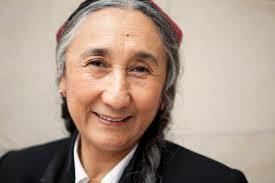 Rebiya Kadeer, Nobel Peace Prize Nominee and the face of the Uyghur struggle for freedom.
Rebiya Kadeer, Nobel Peace Prize Nominee and the face of the Uyghur struggle for freedom.



